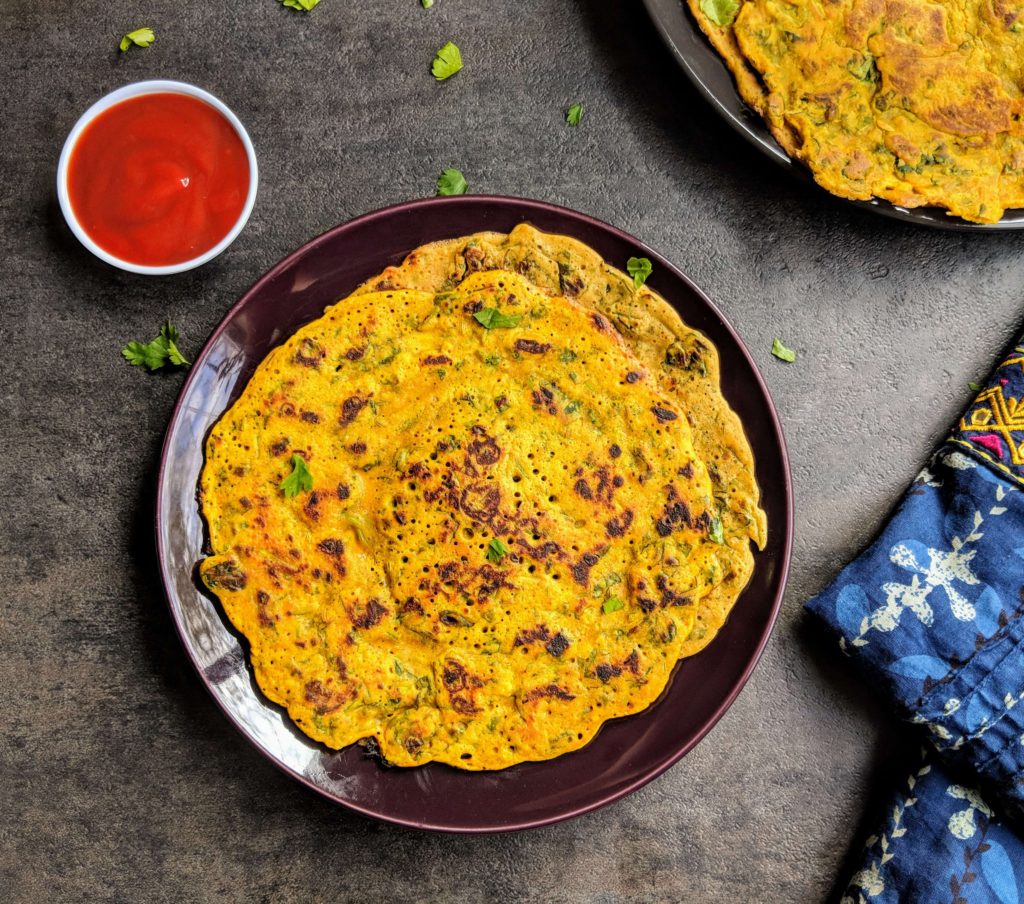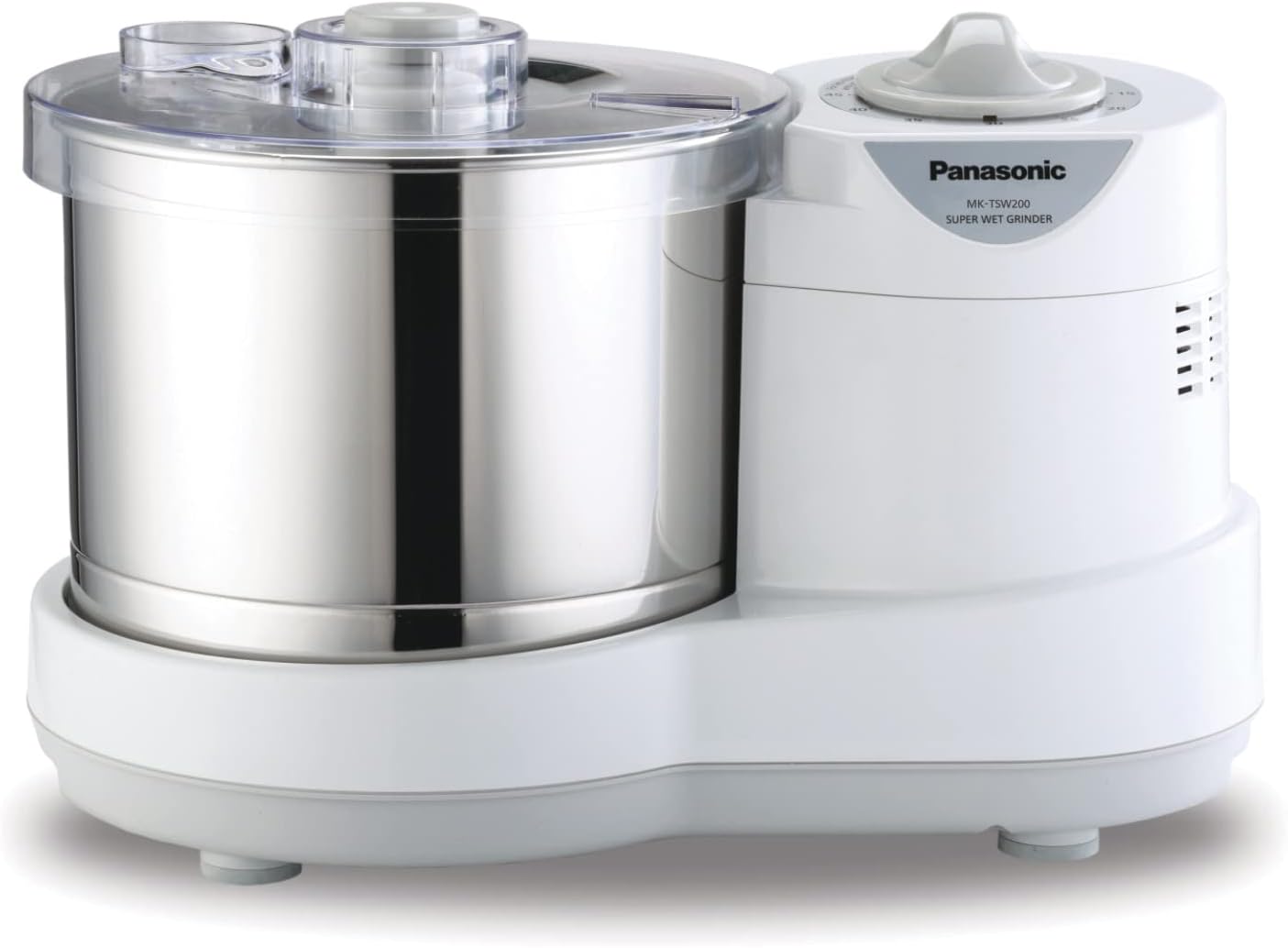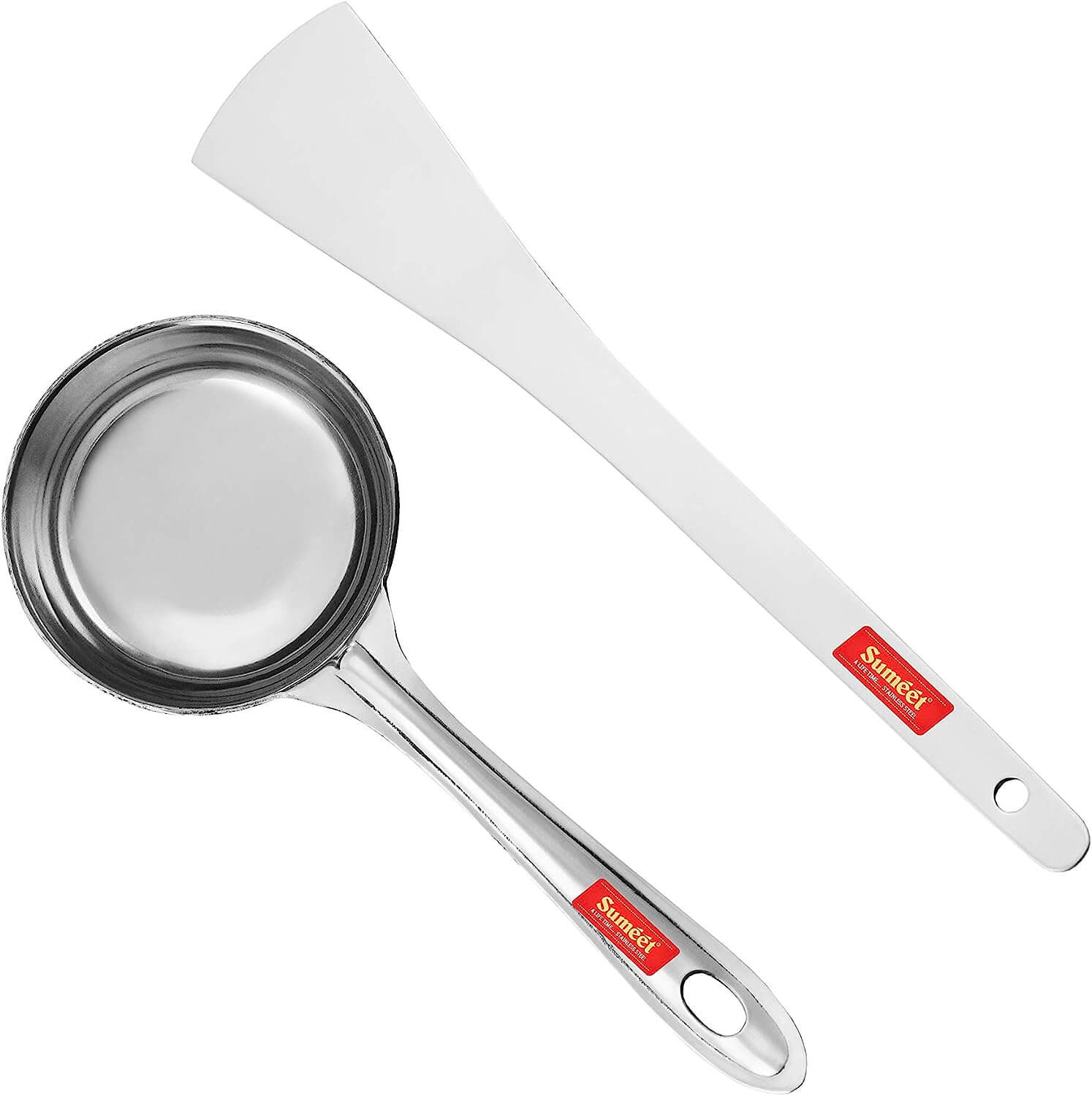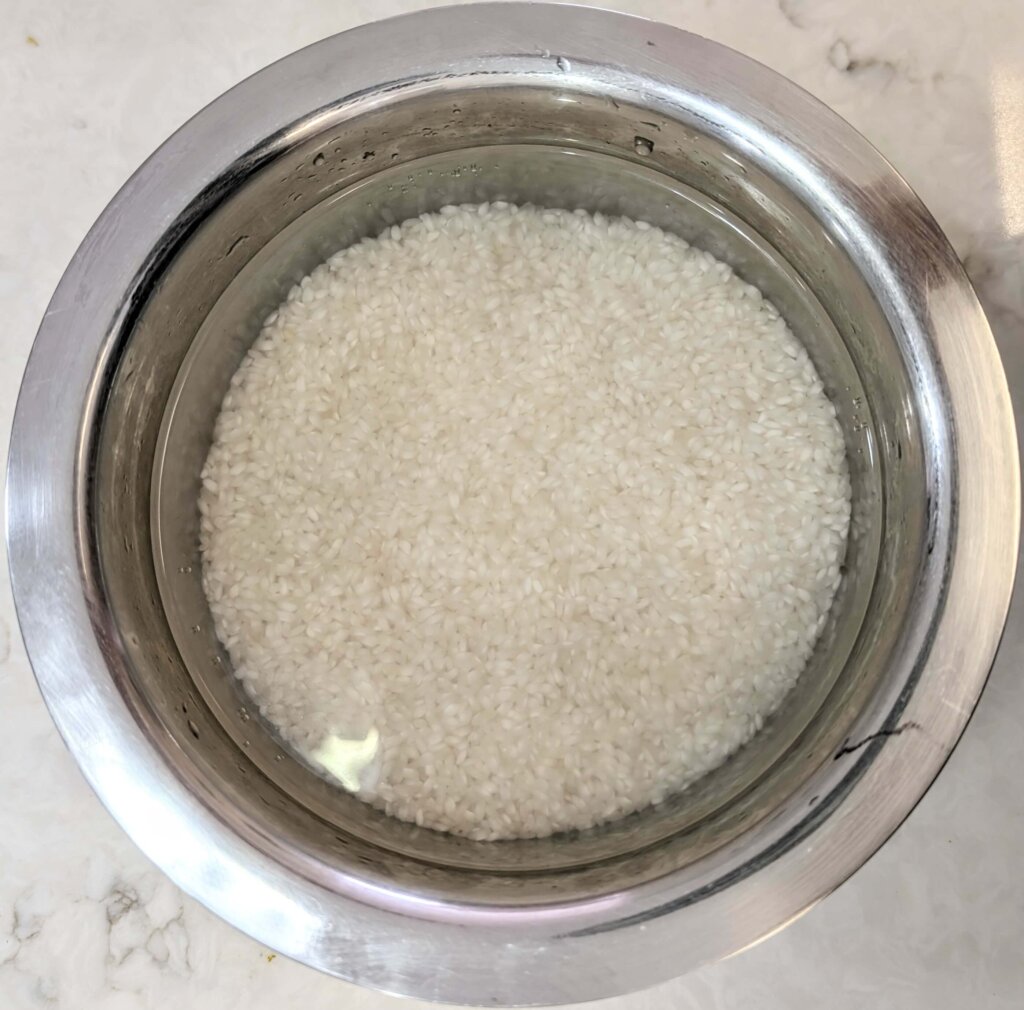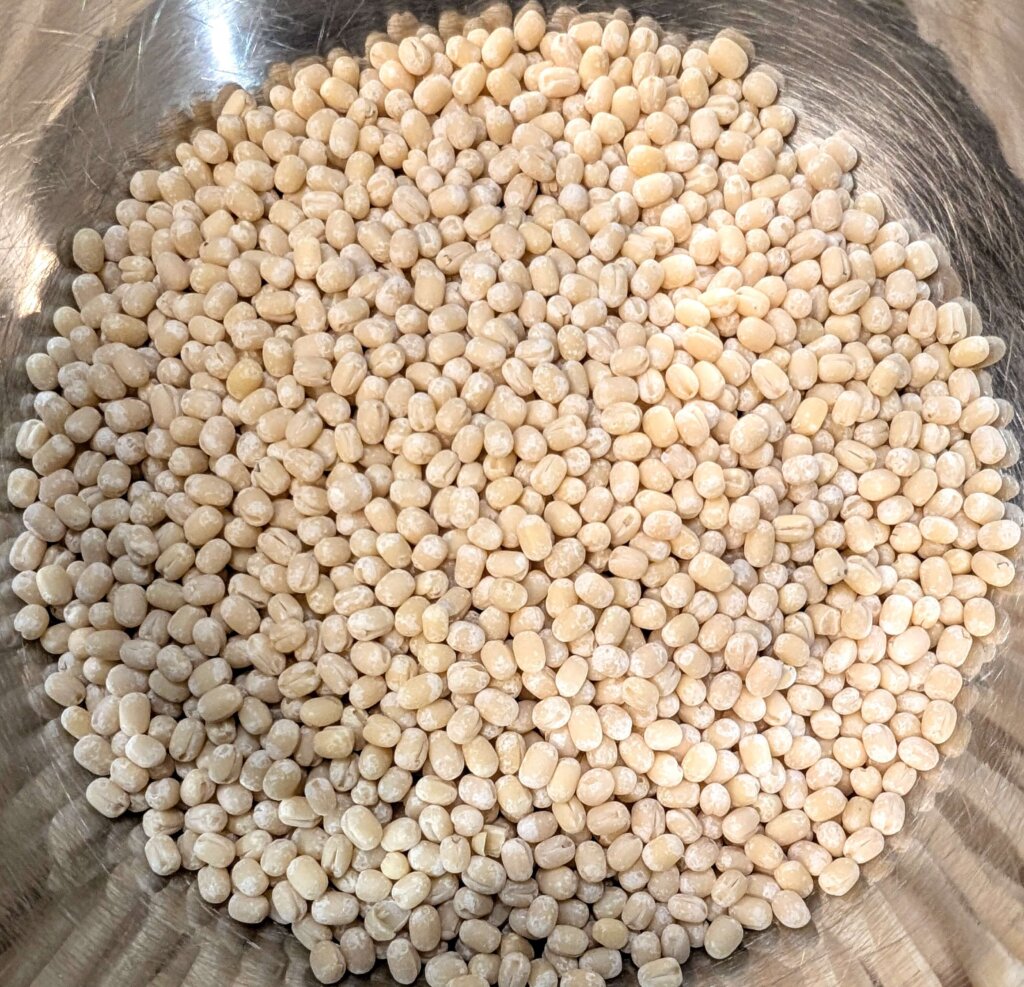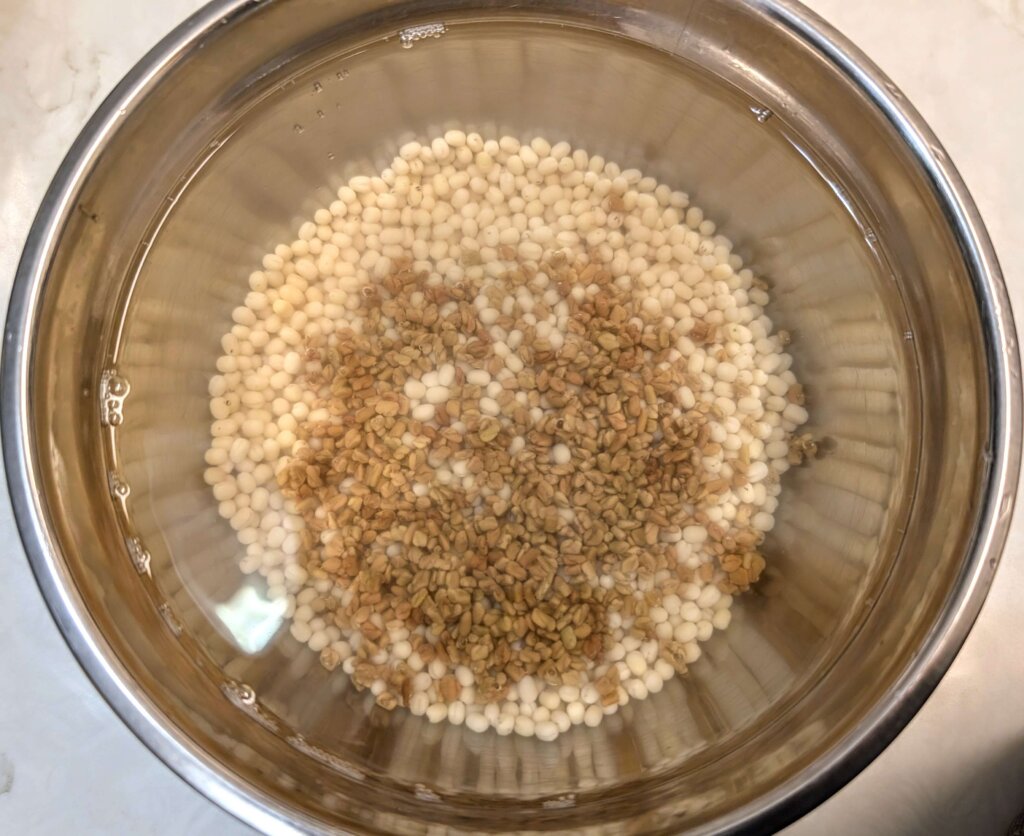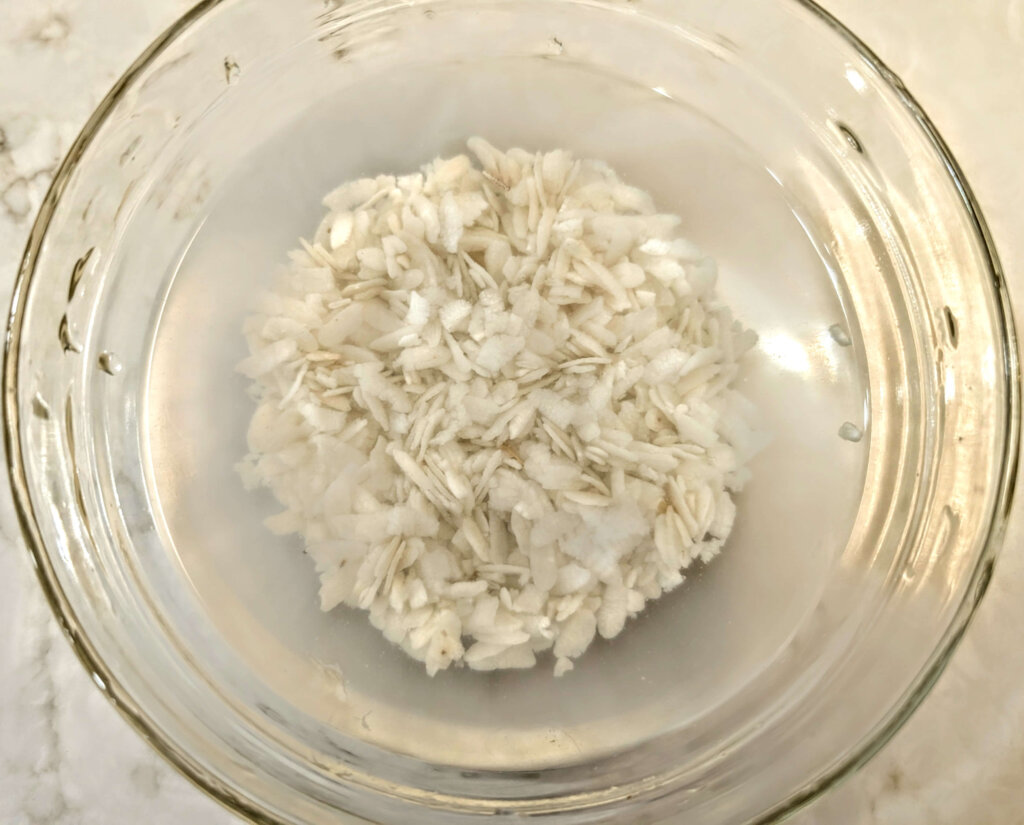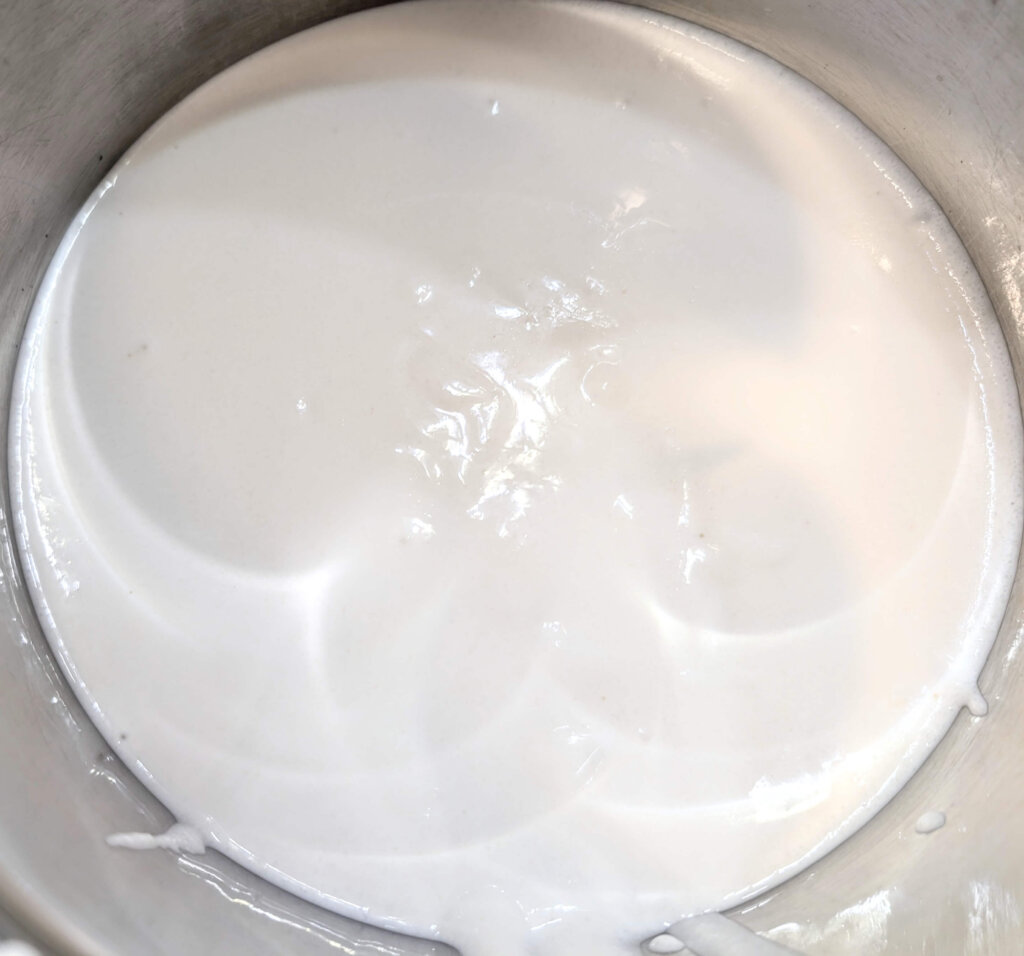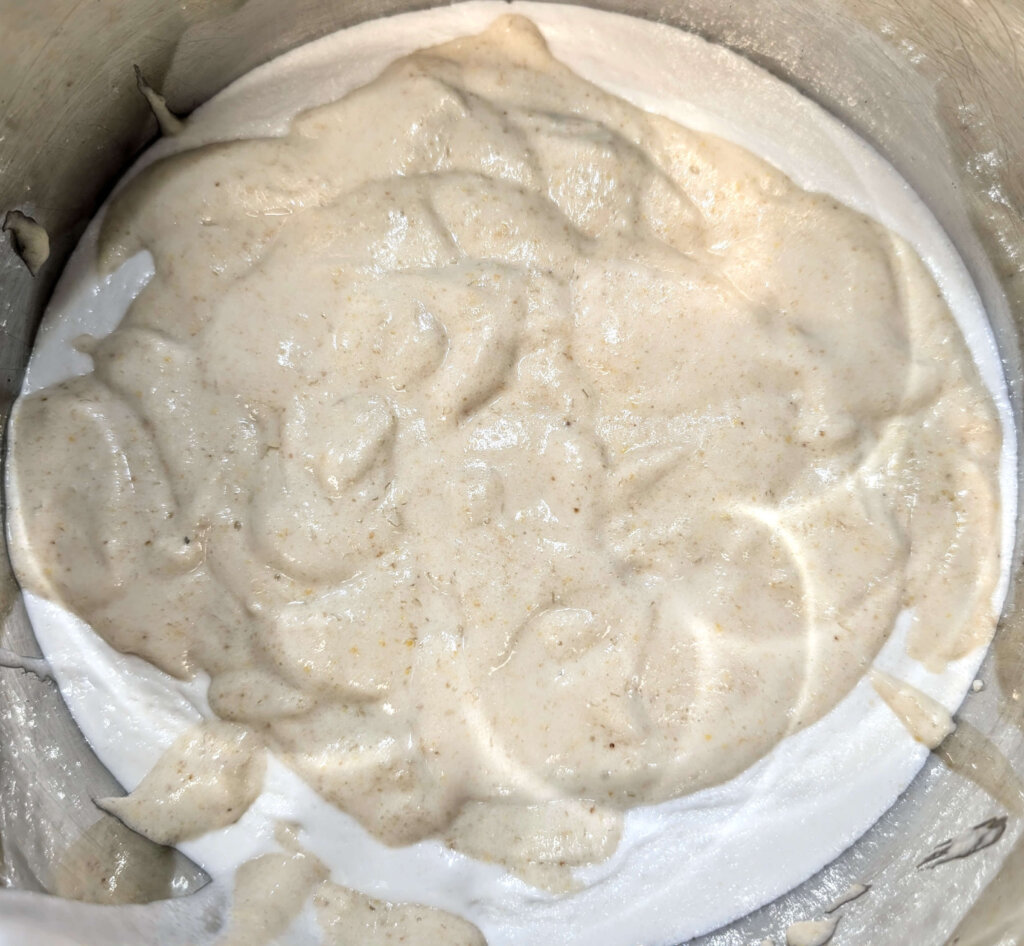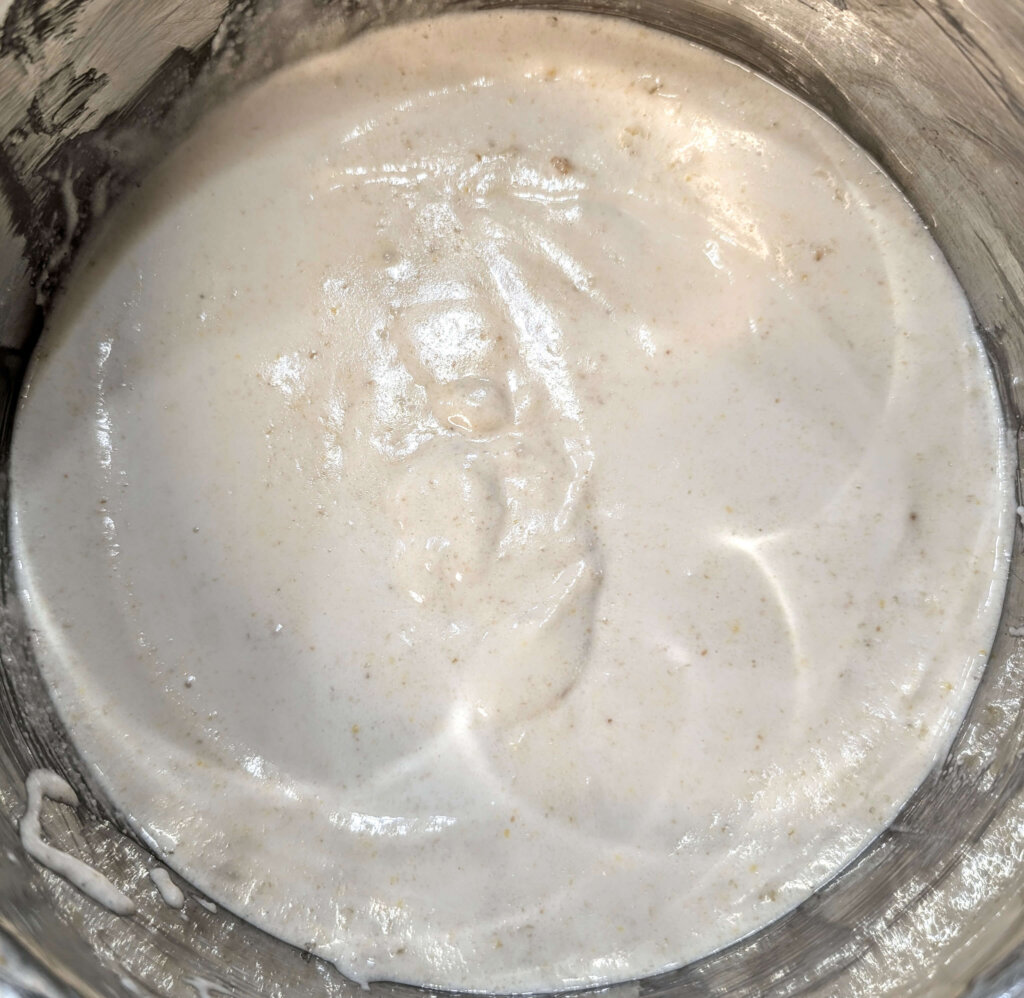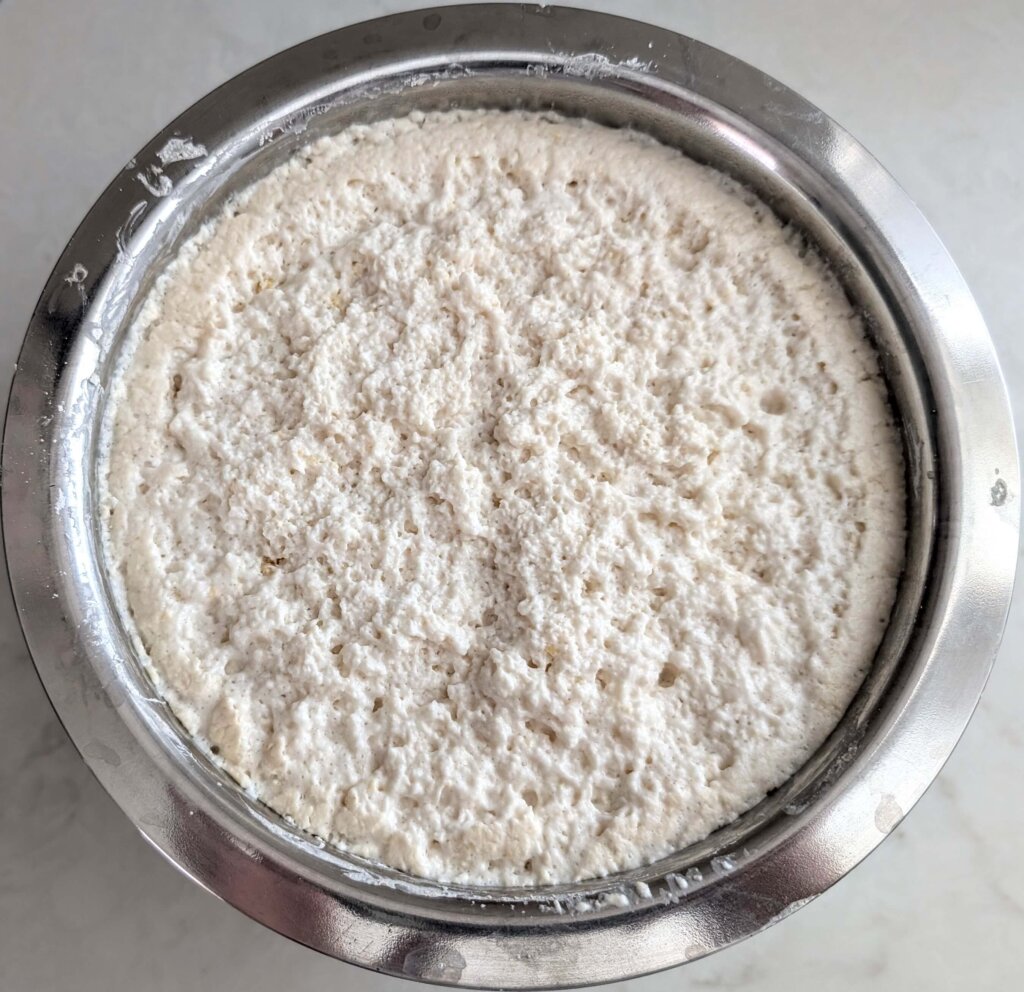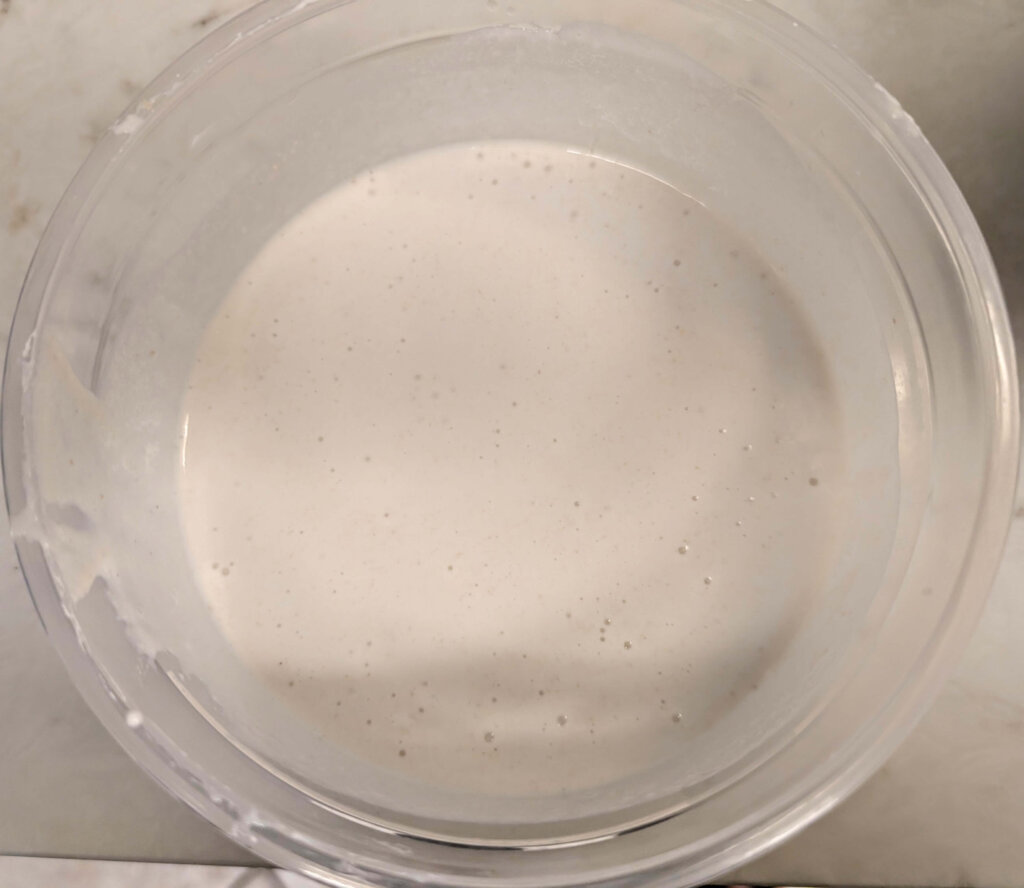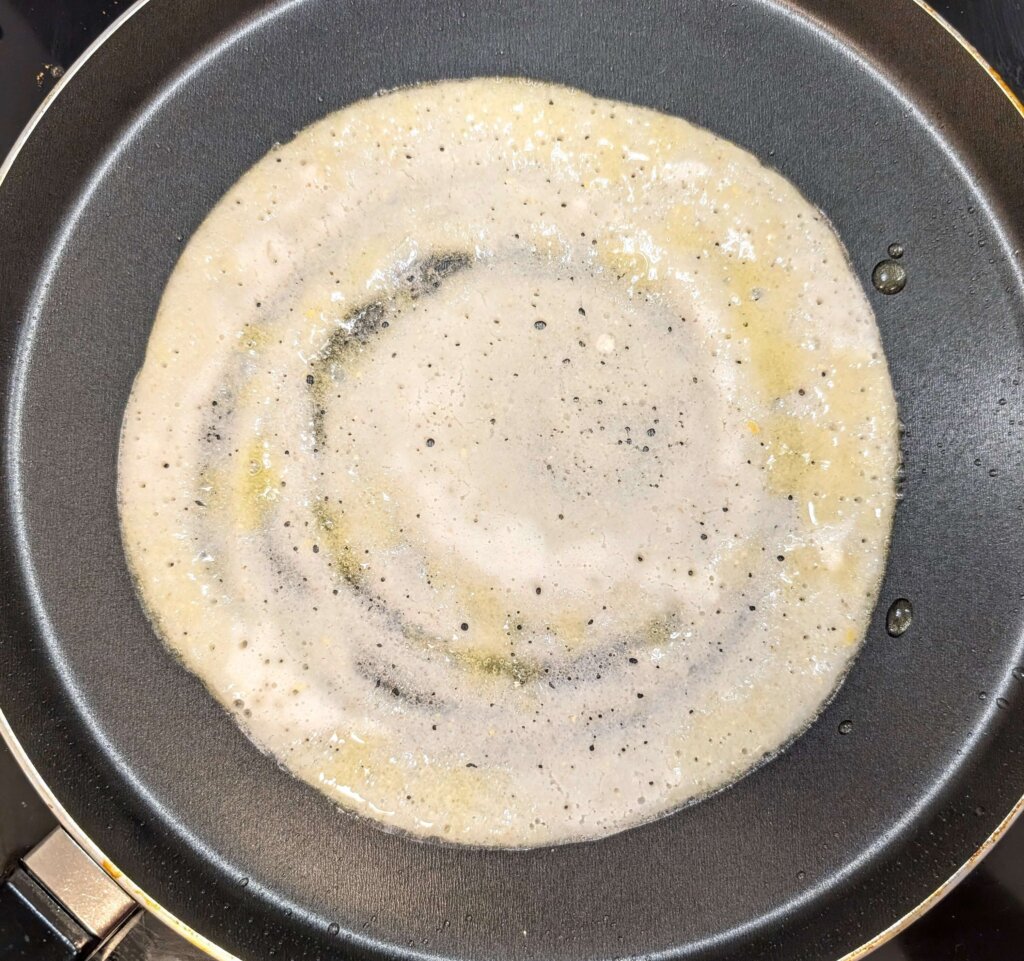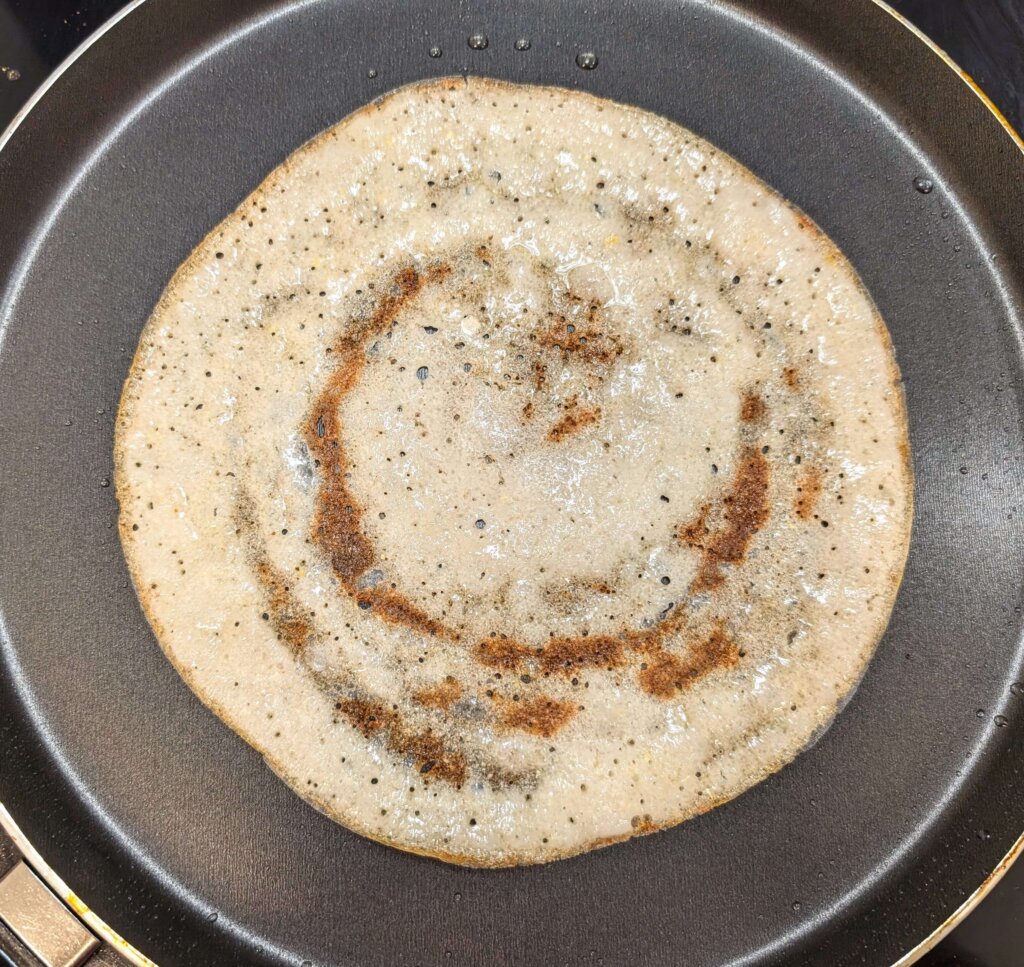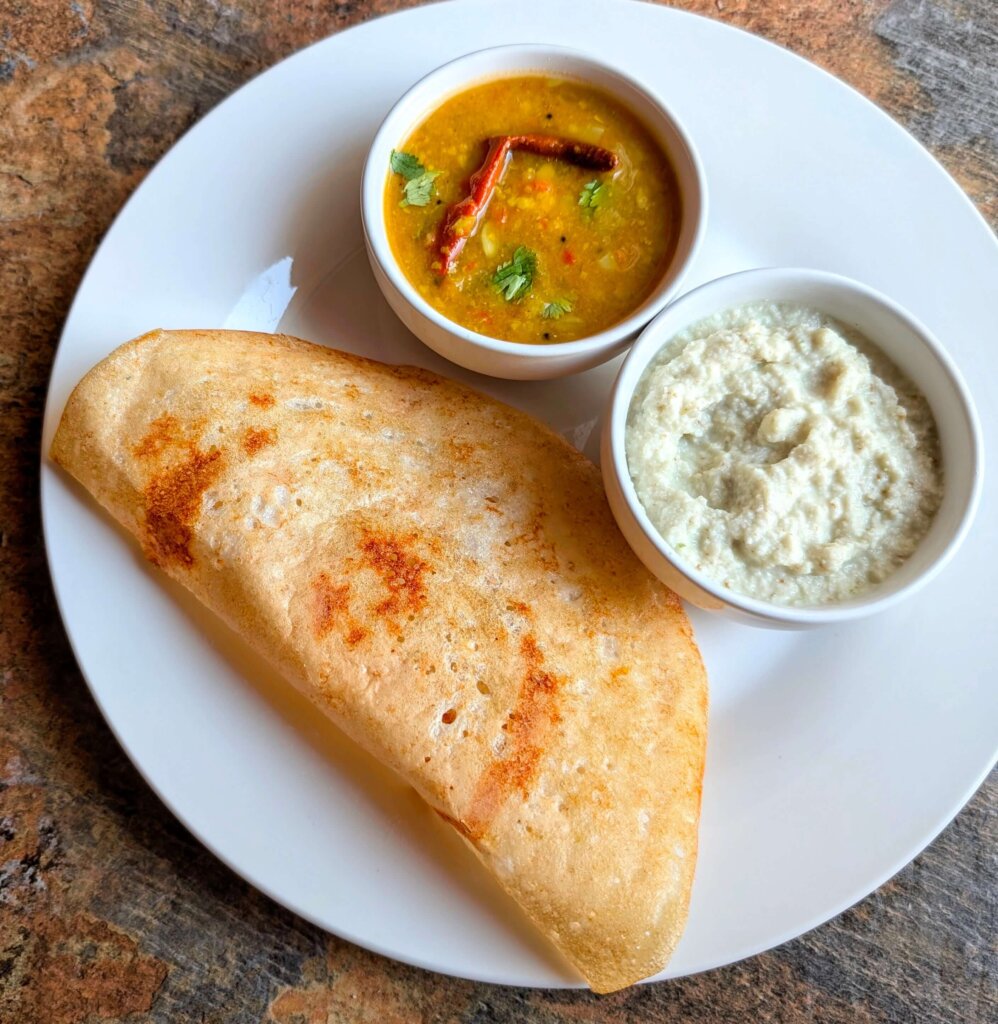About this dosa recipe
Dosa is a thin savory crepe from South India made from a batter of fermented rice and lentils. While the golden brown dosa has a crispy texture, the fermentation process imparts it a slight airiness and a hint of tanginess.
Recipe highlights –
- Authentic South Indian dosa recipe
- Made by fermenting rice and dal.
- Beginner friendly, easy to follow.
- Minimal ingredients.
- Includes tips for grinding and fermenting the batter in cold weather.
While there are many options to buy pre-made batter from stores for making dosas, they contain preservatives, artificial additives and lower quality ingredients. To get the best flavor and texture of dosa it’s best to make a fresh batter at home.
Main ingredients and their substitutes for making dosa
Traditionally plain dosa requires just 2 ingredients – rice and urad dal. However, there are many variations that can be introduced to the basic dosa batter that change the resulting texture and flavor –
- Rice – which is the best variety to use for dosa?
- Idli rice or parboiled rice – Best for authentic dosa batter. They ferment well and give dosas their characteristic texture. Note – Parboiled rice is rice that has been partially boiled in the husk and then dried out, to improve its nutritional value, texture, and flavor. Idli rice is a special type of parboiled rice and is available in most stores.
- Short or medium-grained rice – Raw rice varieties like ponni rice or sona masoori rice can also be used for making dosas.
- Combination raw & parboiled rice – Mix raw rice with parboiled rice in equal quantities for a more crispy texture of dosa.
- Long grained rice – Varieties like basmati rice can also be used, but may alter the traditional taste and texture of dosa.
- Lentils for dosa
- Urad dal – Dosa is typically made with off-white colored urad dal, which is dehusked black gram. Both whole and split urad dal can be used. The traditional recipe uses skinned whole urad dal, also known as urad gota.
- Chana dal & toor dal – Some people also add 2-3 tablespoons of chana dal (husked Bengal gram) or tur dal (pigeon pea lentils) to enhance the color and flavor of the dosas, however it’s completely optional.
- Fenugreek Seeds
- Known in hindi as methi dana, these seeds are added during soaking to aid in fermentation and to enhance the flavor of the dosa batter. I recommend adding them, however if you do not have the fenugreek seeds, you can skip them.
- Poha
- Adding poha is completely optional, but it helps to make the dosas softer and more porous and also aids in fermentation.
- Some people also add cooked rice, however it makes the batter spoil a bit faster.
Suggestions for preparing the dosa batter
The first step in preparing dosa batter is soaking the rice and urad dal for several hours to soften them. Then they are ground into a smooth paste to make the batter. Here are a few things to keep in mind while making dosa batter –
- Ratio of rice & urad dal – The main ingredients of dosa batter – rice & urad dal – are typically used in a 4:1 ratio. For making an idli batter the 3:1 ratio works better, but in case of dosas, higher quantity of rice helps makes the dosas more crispy. To scale the recipe, adjust the quantities as needed while maintaining this ratio.
- Soak the dal and rice separately – It is recommended to soak rice and dal separately. This is because they require different soaking times and are generally ground to varying degrees of coarseness. However, for convenience, some people soak them together.
- Consistency of dosa batter – The batter should be thick and slightly coarse before fermentation to achieve crispy dosas. The rice is usually ground to a coarse texture, while the urad dal is ground to a fine, fluffy paste. Add water gradually while grinding, using only the minimum amount needed to grind the ingredients. Post-fermentation, the batter should become light and airy.
- Grinding Equipment
- Stone grinder – In South India, dosa batter was traditionally ground manually using stone grinders. In most big restaurants, the batter is ground using large stone wet grinders, however, they are generally not used at homes.
- Table Top Wet Grinders – These are the best and most convenient for making large quantities of batter. This Panasonic wet grinder is a great option if you make dosa batter regularly.
- Mixer Grinders – The mixer grinders which are commonly used in most Indian homes also work well. I use a one similar to this Preethi grinder for making my dosa batter.
- Blender – For smaller quantity of dosa batter, like given in this recipe, you can use any high powered blender, however I recommend at least a 700W power motor. Blenders similar to this Ninja countertop blender or Ninja personal blender would work.
Expert tip 1: If your blender is less powerful, soak the rice and dal longer to ease grinding.
Expert Tip 2: Use ice-cold water for making the dosa batter and keep adding it slowly while grinding to prevent the grinder from overheating.
Tips for proper fermentation of dosa batter
Fermentation is the most crucial step in making perfect dosa, as it gives dosas their characteristic taste and texture. However, achieving proper fermentation can be challenging, especially in colder climates or during winter. Here are a few tips to ensure your batter ferments perfectly –
- Summers / warm weather – In summer, allow the batter to ferment for 8-10 hours in a warm, dry place. Leaving it outside overnight usually works well.
- Winters / cold weather – In winter, the batter may need 10-12 hours or more to ferment. If it doesn’t ferment, try placing it in the microwave or oven with the light on. For very cold conditions, ferment in the oven at 40°C (100°F) or place the covered batter outside in the sunshine for an hour.
- Mix batter with hands – After grinding the rice and dal separately, the traditional way to combine them together is using your hands. This aids in the fermentation of the dosa batter. Ensure your hands are thoroughly washed before mixing.
- Use a large vessel – Fill the vessel to a maximum of 3/4th full to leave space for the dosa batter to rise. Keep a plate below the vessel while fermenting, because sometimes the batter spills over when it’s too hot.
- Add salt at the beginning or end – When to add salt to the dosa batter depends on the type of salt being used. Non-iodized salts such as rock salt, sea salt or Himalayan pink salt should be added at the beginning as they aid in fermentation. On the other hand, adding iodized salt before fermentation inhibits the growth of bacteria which are crucial for the fermentation process, and so it should be added just before cooking the dosas.
Making perfectly golden-brown crispy dosas
While a properly fermented dosa batter is very important, there are also few things to keep in mind while cooking the dosas to ensure they come out perfectly crispy –
- Seasoning the pan – Dosa is traditionally made on a heavy cast iron tawa, which doesn’t have edges. This makes it easier to spread and lift the dosas. Make sure to season your pans by brushing them with a thin layer of oil.
- Non-stick pans – If you are new to making dosas, you can use non-stick pans as well, which will prevent the dosa from sticking to the pan.
- Temperature for cooking dosas – When spreading the dosa batter on the pan maintain medium-low heat, otherwise the batter will clump and not spread properly. Once spread, increase the heat to cook the dosa evenly.
- Sugar & rice powder – These are both optional ingredients but can be added to the batter just before making the dosas. The sugar gives the dosas a nice golden brown color and the rice powder helps to make the dosas crispy. Add 1/2 teaspoon of sugar and 2 tablespoons rice powder for roughly 2 cups of batter.
Serving suggestions for dosa
Dosas are very versatile and pair wonderfully with a variety of side dishes –
- Fillings – Dosas can be served plain or with various fillings, like spiced potatoes (masala dosa), paneer bhurji, stir fried vegetables or even cheese.
- Chutneys – Dosa and chutney is a classic and beloved combination in South Indian cuisine. There is a wide variety of chutneys that go really well with dosas like coconut chutney, tomato chutney, ginger chutney, peanut chutney etc.
- Sambar – Another staple combination is serving dosas with traditional South Indian sambar like Sorakkai Sambar, Brinjal Sambar.
Dosa should be served freshly made, otherwise it will become soggy. You can prepare the batter in advance and then make the dosas just when you are ready to eat.
To make perfectly crispy dosas with fresh homemade batter follow the detailed step by step recipe with pictures posted below.

Dosa Recipe with Dosa Batter
Recipe Info
Nutrition
Ingredients For Dosa Recipe with Dosa Batter
- 2 Cups Idli Rice or Parboiled Rice
- 1/2 Cup Urad Gota (Blackgram Lentils)
- 1 Tablespoon Fenugreek Seeds (Methi Dana)
- 1/2 Cup Poha (Flattened Rice)
- 2 Teaspoon Rock Salt (Kala Namak) or non iodized salt
- 3 Tablespoon Cooking Oil
Step By Step Instructions for Dosa Recipe with Dosa Batter
Soaking the ingredients
- Take rice in a vessel and wash it 4-5 times till the water runs clear. You can use idli rice or a 1:1 mix of parboiled and any short-grained raw rice for dosa recipe.2 Cups Idli Rice

- Then keep the rice to soak for 4-6 hours. You can also soak it overnight.

- Take urad dal and wash it well too. I am using urad gota here as used in a traditional dosa recipe, but you can also use split urad dal.1/2 Cup Urad Gota (Blackgram Lentils)

- Keep the lentils to soak along with the fenugreek seeds (methi dana) for 2-3 hours. The fenugreek seeds help with the fermentation.1 Tablespoon Fenugreek Seeds (Methi Dana)

- Wash the poha and soak it for 10-15 mins. If using thicker variety of poha, the soaking time will be slightly longer. Adding poha is optional, but it helps improve the texture of the dosa and makes it more fluffy.1/2 Cup Poha (Flattened Rice)

Grinding the dosa batter
- Grind the soaked rice and poha together in batches adding ice-cold water gradually to prevent the grinder from overheating. Try to keep the batter as thick as you can and add only as much water as necessary. I added around 1 cup water. Rice should be ground slightly coarse to make a crispy dosa. You can see detailed tips for grinding in the sections above the recipe.

- Grind urad dal and methi seeds together. I used around 1/2 cup water. These should be ground to a smooth fluffy paste. Add it to the ground rice.

Fermenting the dosa batter
- After grinding, add the rock salt and mix the rice and urad dal batter evenly with your hands. Then cover it with a plate and keep it in a warm place to ferment. Use a vessel big enough so that there is space left for the batter to rise.2 Teaspoon Rock Salt (Kala Namak)

- Ferment 8-10 hours if warm, otherwise 10-12 hours. The batter should be airy, light and raised in volume after fermentation. You can see tips for fermenting dosa batter in cold weather in the section above the recipe.

- Mix the dosa batter gently. Then refrigerate it till you need to use.

Cooking the dosas
- When you are ready to make dosas, take a small portion of the batter to use and let it come to room temperature for 30-40 minutes. Add a little bit of water to make a batter of a thick flowing consistency.

- Then heat a cast iron or non stick pan and brush a thin layer of oil on it. Keep the heat medium-low initially when spreading, otherwise the batter will clump together. Then scoop a ladle full of batter in the center of the pan and spread it over the pan in a spiral pattern with the help of a ladle.

- Then increase the heat to medium-high. Control the heat as needed depending on the thickness of your pan. As the dosa starts to cook slightly add some ghee or oil around the edges.

- Cook till the dosa becomes crispy and golden brown around the edges. It will start to separate from the pan when it is cooked.

- Then flip the dosa with the help of a spatula and cook the other side for 30-60 seconds. Then take it off the pan. Make all the dosas this way.

- Your crispy, golden brown dosa is ready! Serve it hot with coconut chutney, tomato chutney, or a bowl of sambar for a delicious South Indian meal. For variations, try making masala dosa or pairing with paneer bhurji.

Before You Go...
Don't forget to Pin this post to save it for later. You can also Subscribe to our mailing list or follow us on Facebook, Pinterest, Instagram or Twitter to see more delicious food recipes.
We'd love to know your thoughts about this dish! Please leave a comment or share a picture on Facebook or Instagram with the hashtag #vegecravings.





